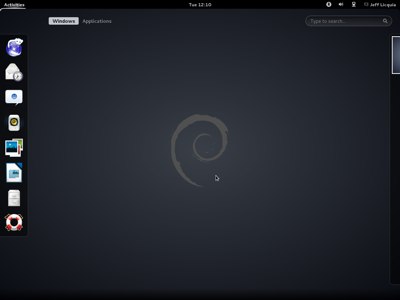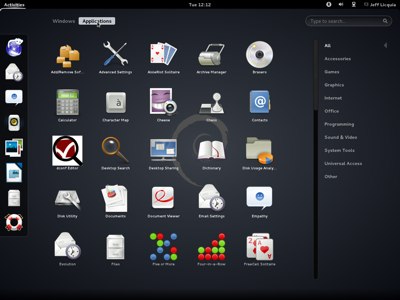The Debian project earlier this month put the finishing touches on their latest release: Debian 7.0, code named “Wheezy.”
Debian was an early pioneering Linux distribution, and has been a pillar of the community for nearly two decades. Today, it is well-known for its comprehensive repositories of software, its careful approach to updates, its smooth package installation and upgrade process, and its commitment to software freedom. It is particularly popular as a base for customization, with notable derivatives including Ubuntu and Linux Mint.
 This release marks the availability of two new architectures and a number of major updates and new features.
This release marks the availability of two new architectures and a number of major updates and new features.
Multiarch
Debian’s new system for supporting multiple architectures (called “multiarch”) is perhaps the biggest change in this new release.
Most distributions provide some support for running compatible architectures, usually targeted at supporting older 32-bit applications on newer 64-bit operating systems transparently. Debian’s previous system for doing so involved a single large package containing a subset of the available 32-bit libraries.
The new system, in the works for eight years, moves all libraries to separate directories for each architecture, making it possible to simultaneously install every architecture’s libraries on the same system. The package manager then controls which architectures are available on a particular system. Architectures can be removed or added by changing the package manager’s configuration.
Besides the normal use case of supporting 64-bit and 32-bit architectures simultaneously, multiarch could in principle support transparent emulation of incompatible architectures, in-place upgrades from 32- to 64-bit (or the reverse), or support for other operating systems.
Architectures
While the count of official architectures remains the same, it includes two new architecture variants: ARMv7 (“armhf”) and 64-bit IBM System z (“s390x”). Both of these architectures take advantage of the new multiarch feature to support the older “armel” and 31-bit “s390” platforms.
Cloud Support
Debian has also improved its support for cloud computing. Besides the usual updates to the KVM and Xen hypervisors, the Xen Cloud Platform and OpenStack cloud suites are now available for easy installation.
GNOME 3
 GNOME 3 makes its debut in Debian with this release, based on GNOME 3.4. It is available for easy installation and as an officially-supported live image, along with KDE 4.8, LXDE, and XFCE. Ubuntu’s Unity and Mint’s MATE and Cinnamon are not supported in this release.
GNOME 3 makes its debut in Debian with this release, based on GNOME 3.4. It is available for easy installation and as an officially-supported live image, along with KDE 4.8, LXDE, and XFCE. Ubuntu’s Unity and Mint’s MATE and Cinnamon are not supported in this release.
New Init Systems
In keeping with its goal as “The Universal Operating System”, Debian 7.0 supports all of the major init systems, including the old System V init system (which remains the default), systemd, and upstart.
Office Suites
The recent trend among Linux distributors to replace OpenOffice.org with LibreOffice continues with Debian 7.0. KOffice continues to be supported along with the Calligra office suite.
Other Updates
Nearly the entire distribution has been updated from Debian 6.0. Some of the most notable updates include:
– Linux 3.2.0
– GCC 4.7
– glibc 2.13
– Python 2.7 and 3.2
– X.Org 7.7
Welcome to Jessie!
With the release of “Wheezy”, development has started on the next version of Debian, codenamed “Jessie”.
Where To Get Debian
Debian is available for download now at www.debian.org. Installation images are available for all supported architectures in CD- and DVD-sized ISOs, as well as network install images and a multi-arch image that supports both 32- and 64-bit Intel x86 systems. Debian also provides live images in minimal and rescue profiles, as well as the four desktops mentioned above.
Debian is also available as an AMI on Amazon Web Services in 32- and 64-bit paravirtualized images.
Users of Debian 6.0 “squeeze” can upgrade their systems in-place, as with previous Debian releases.
(Jeff Licquia is a Senior Engineer at the Linux Foundation.)



